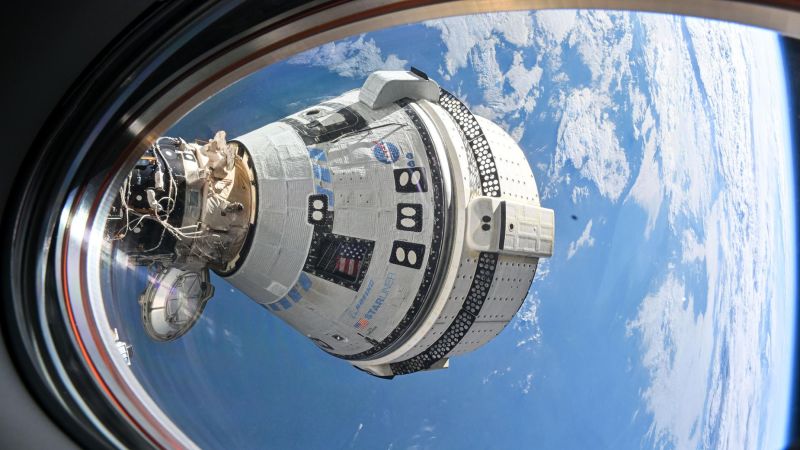Starliner Astronauts' Space Stay Extended: Return Uncertain as NASA Considers SpaceX Rescue

Two veteran NASA astronauts, Butch Wilmore and Suni Williams, are facing an extended stay on the International Space Station (ISS) after their Boeing Starliner mission ran into unforeseen difficulties. The pair, who launched on the first crewed test flight of the Starliner spacecraft on 5 June, have now been in space for over 63 days, significantly exceeding the initial planned duration.
While NASA initially planned for Williams and Wilmore to return home on the Starliner, a growing number of concerns regarding potential propulsion issues and helium leaks have cast doubt on the spacecraft's safety for a crewed return.
The agency is now openly considering using a SpaceX Crew Dragon spacecraft to bring the astronauts back to Earth. This move could potentially extend their mission by six months, pushing their return into 2025.
NASA officials admitted that the agency has not yet started a "flight readiness review" for the Starliner crew's return, suggesting that concerns over the spacecraft's functionality are substantial.
Ground testing, which was conducted in New Mexico to investigate the reported issues, revealed surprising results. While NASA initially suspected that excess heat around certain Starliner thrusters was causing teflon seals to bulge, restricting propellant flow and leading to thruster problems, the exact cause remains unclear.
This uncertainty has sparked disagreement within NASA regarding the safety of a crewed return on the Starliner, with officials expressing growing unease about the potential risks.
Although Boeing maintains that Starliner is safe for the crew's return, NASA has begun exploring alternative routes for Williams and Wilmore.
One potential contingency plan involves utilising a scheduled SpaceX Crew Dragon mission, Crew-9, to bring the astronauts home. However, this would require adjusting the Crew-9 mission profile, reducing the number of astronauts on board from four to two, and allowing Williams and Wilmore to fill the remaining seats. This option would extend their stay on the ISS by six months, as they would become part of the Crew-9 rotation, with their return potentially happening no earlier than February 2025.
In this scenario, the Starliner would return to Earth empty, and NASA would then have to decide whether the data gathered during the mission is sufficient to certify Starliner for routine spaceflights.
NASA has acknowledged that this contingency plan is not yet formally activated, and returning the astronauts on Starliner remains the "prime" option.
However, a recent decision to delay the launch of the SpaceX Crew-9 mission, originally scheduled for 18 August, provides NASA with more flexibility in making a decision regarding the Starliner contingency plan. The Crew-9 launch is now expected no earlier than 24 September.
Despite the uncertainties, NASA is working tirelessly to ensure the safe return of Williams and Wilmore. The agency is currently weighing the risks and benefits of various return scenarios, including the potential use of a SpaceX Crew Dragon spacecraft. A final decision regarding the astronauts' return method is expected to be made by mid-August.





